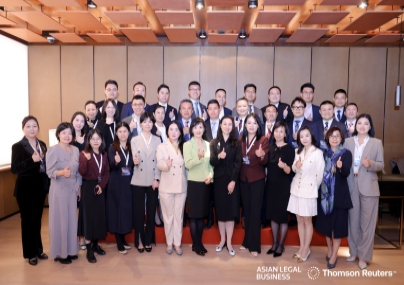Overburdened Chinese regulators have left the peer-to-peer lending industry to poorly staffed local governments, according to ex-regulators, threatening the survival of an important credit mechanism once seen as crucial for the country’s economy.
The resulting difficulties, as the industry tries to grapple with pyramid scheme scandals and runaway bosses, underline the struggles China will face as it tries to balance financial risk and innovation.
Although P2P lenders elsewhere in the world have been viewed skeptically because of how they mix mom-and-pop investors and higher-risk loans, in China the sector was seen as helping plug a gap left by larger lenders.
In 2016, P2P platforms in China loaned $61.5 billion, versus a total 12.65 trillion yuan ($1.78 trillion) in loans made by commercial banks, according to central bank data.
But the number of P2P firms in China has shrunk from 6,000 at their 2015 peak to 708 at the end of August, according to P2P-tracking portal Waidaizhijia, as regulators have struggled to implement new rules.
Lufax, once an industry leader and the best-known name internationally, plans to quit the business entirely after struggling to meet regulators’ requirements.
The People’s Bank of China (PBOC) and China Banking and Insurance Regulatory Commission (CBIRC) – already struggling to oversee an expanding finance industry – passed the responsibility to provincial governments in 2015, those sources said.
Without the expertise or numbers to confidently set standards, provincial regulators essentially froze, they said.
P2P firms and regulatory sources say that the resulting lack of resources, and standards that differ from province to province, have made it hard to plan.
“An industry that should have been regulated more was not, and now we’re seeing that implode with even the stronger players like Lufax pulling out of the industry,” said Zennon Kapron, director at financial technology consultancy Kapronasia.
BOOM AND BUST
China’s P2P firms have dabbled in all manner of misdemeanors, including misallocating funds and mass criminal enterprises such as Ezubao - a 50 billion yuan fraud - where convictions ranged from illegal possession of weapons to undocumented border crossings.
In the initial years of the P2P surge, regulators in China took a hands-off approach. But once fraud erupted and victims took to the streets, what was then called the China Banking Regulatory Commission drafted regulation that passed oversight to local authorities.
“It was a mission impossible ... as the number of P2P platforms was so large at the time,” said a person at a northern branch of the CBIRC, who was not authorized to speak to the media.
Finance bureaus operating under local government authorities then passed the work down to district bureaus, who relied on P2P firms for data and disclosure.
P2P firms in each district had to submit accounts monthly, quarterly and yearly to the bureaus. They also had to submit a database with details such as cash flow to the city Commission of Economy and Information, which reports to the central bank.
“The problem was, there was no time to do the analysis,” said a person who worked for more than a decade at the banking regulator and then at a P2P firm, who declined to be identified as she is not authorized to speak to the media.
“The authorities had no toolbox to supervise the firms; there was no offsite surveillance,” the person said. “This is why it all went wrong.”
Local agencies had tiny staffs compared with the CBIRC and the PBOC, according to one ex-regulator and a person at an internet regulatory body that oversees P2P. Both declined to be identified as they are not authorized to speak to the media.
The Shanghai CBIRC, for example, has about 300 people, sources familiar with the regulatory power said, while the local finance bureau had 16 to 39 at end of 2016, according to a 2017 study by Wang Chong, a central banker at PBOC’s Jinan branch.
The ex-regulator said some districts were completely unstaffed.
Hebei province - population 75 million - surrounds Beijing, but officials in the finance bureau there failed to respond to 200 reports and requests from Fincera, once the province’s largest P2P firm by loans, Fincera said in a statement to Reuters. The company has since left P2P lending.
The Hebei finance bureau did not respond to requests for comment.
In June and July, the province’s authorities asked all P2P firms to close, according to two notices seen by Reuters.
But in other provinces, and cities such as Beijing, P2P companies are still operating.
LACK OF TOOLS
In other countries, P2P has thrived as an alternative to bank lending.
The U.S., UK and Japan all have active P2P companies. According to an analysis by the Asian Development Bank Institute (ADBI), the UK regulatory framework has been the most successful at encouraging the industry.
In the U.S., P2P platforms loaned $1.5 billion in 2016, while UK firms loaned $1.8 billion. Japanese P2P lenders had $1.2 billion of outstanding loans in 2017, according to the report.
In the UK, P2P firms are assessed by the country’s top financial regulator, which focuses on engagement with the platforms, according to the 2019 ADBI paper. It provides feedback on their plans and runs a sandbox for testing new models, said the paper.
Ultimately, Chinese regulators are more concerned with social stability than the survival of P2Ps, industry insiders said.
“Top regulators don’t necessarily see the bigger picture,” said the banking regulator based in a northern city.
Mass protests, such as one in Beijing last year, are “likely to lead to the cutting-off of the whole industry,” the person said.
The CBIRC and PBOC didn’t respond to requests for comment.


